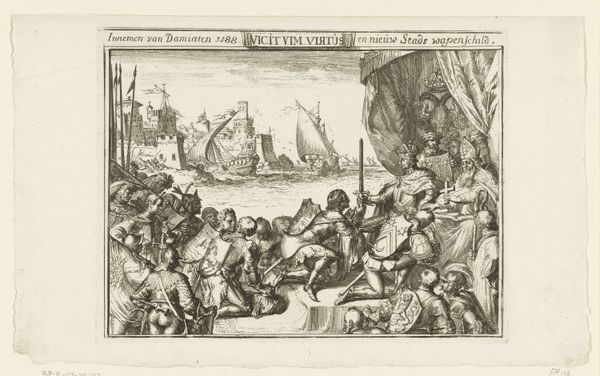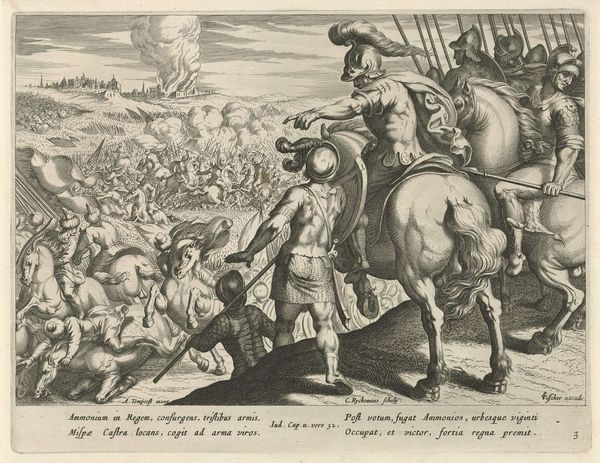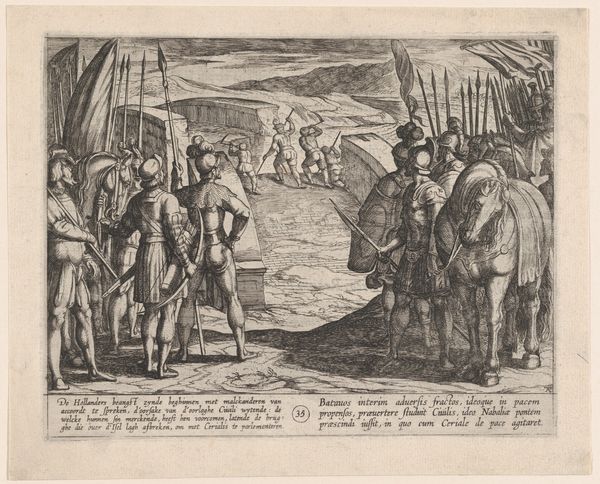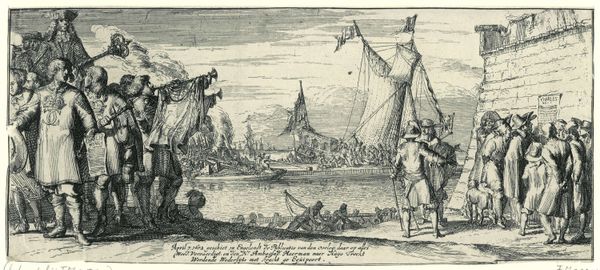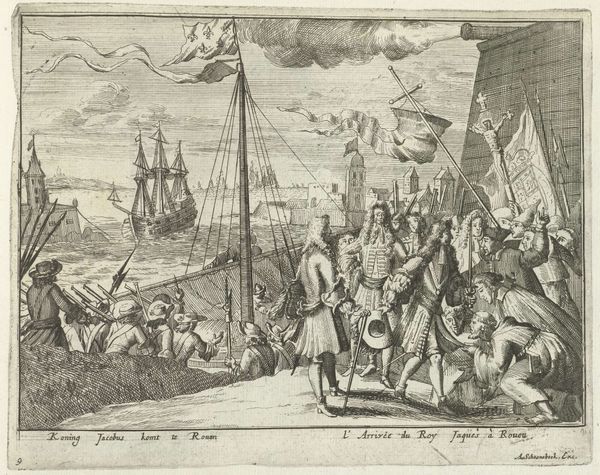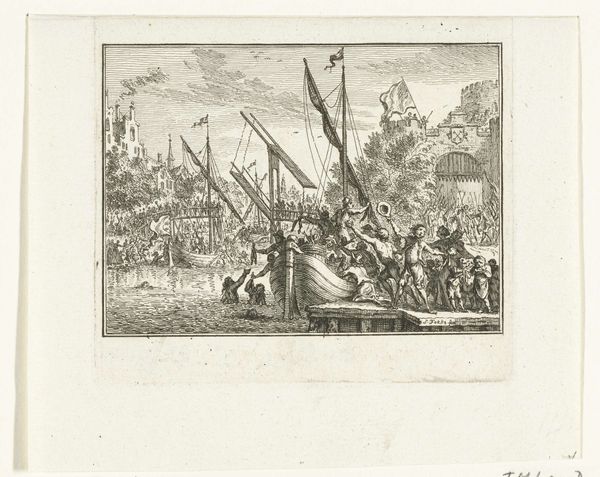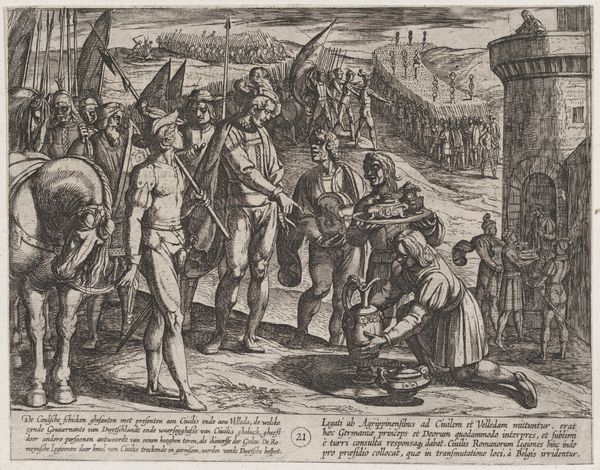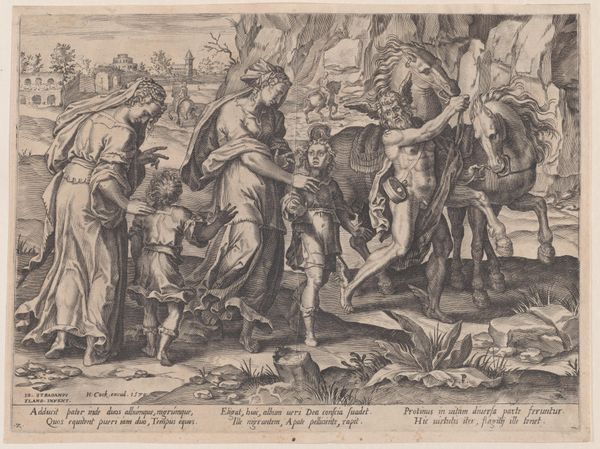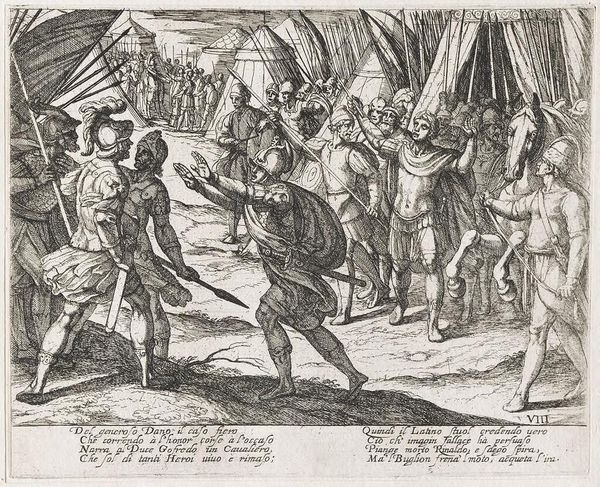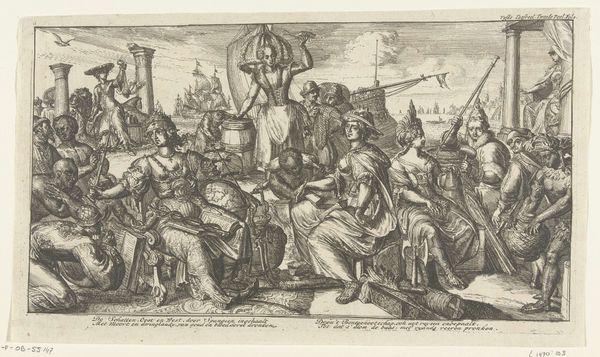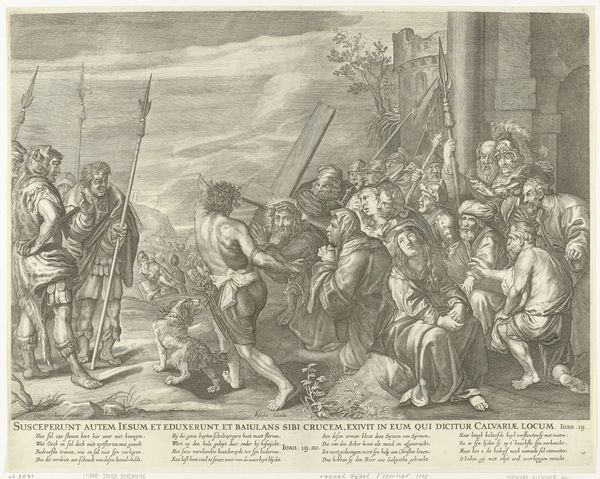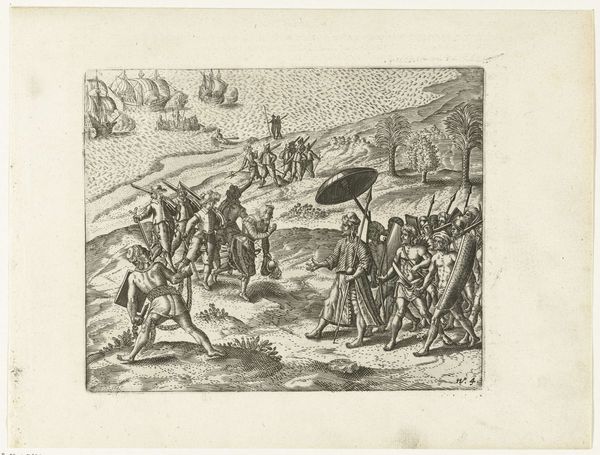
Stadsbestuur van Utrecht biedt Lodewijk XIV de sleutels van de stad aan, 1672 1672 - 1674
0:00
0:00
romeyndehooghe
Rijksmuseum
#
ink drawing
#
pen drawing
#
mechanical pen drawing
#
pen illustration
#
pen sketch
#
pencil sketch
#
ink drawing experimentation
#
pen-ink sketch
#
pen work
#
pencil art
Dimensions: height 169 mm, width 258 mm
Copyright: Rijks Museum: Open Domain
Curator: This intricate ink drawing by Romeyn de Hooghe depicts the Stadbestuur van Utrecht offering Louis XIV the keys to the city in 1672, now held at the Rijksmuseum. Editor: My immediate impression is one of stark submission, rendered in incredibly detailed miniature. It's visually dense, almost claustrophobic. Curator: Indeed. The means of production here, the meticulous process of etching with ink on, presumably, a copper plate, speaks to the intention. This was not a fleeting impression, but a carefully constructed political statement, likely intended for mass distribution. The availability of these prints would have shaped public opinion and knowledge of this event. Editor: Absolutely. The act of handing over the keys is rich with symbolic meaning. The keys themselves are symbols of authority, of power, quite literally surrendered. Observe how Louis XIV stands tall under a canopy inscribed with 'Nec Pluribus Impar'. Curator: And, considered materially, those keys—likely made of metal—were themselves forged objects, commodities traded, representing the economic as well as the political agency being transferred. One city state yielding resources to the Sun King's empire. The line work makes this readily clear; it’s not just representation but active depiction, shaping opinion, perhaps justifying or decrying the outcome. Editor: Notice the visual emphasis on the sheer number of Louis' soldiers arrayed to witness this exchange and compare to those offering Utrecht. Also notice, that overhead Latin quote translates roughly to, “Not unequal to many", emphasizing Louis' individual power but, moreover, his absolute claim to divine sanction of absolute dominance and might, especially in times of upheaval and social questioning about royal divine will. Curator: I see how that iconography underlines Louis' manufactured persona, how his place as king is as much performed as factual. But how was this artwork purchased or commissioned, and how much were similar ones selling for? Such a production raises questions regarding access, control, and intent on several fronts during its period. It's fascinating to consider the power dynamic. Editor: Precisely, those production details provide key details— but its impact comes, not just from making available a resource— but from what all this *means.* Curator: It makes me look beyond the single instance, to production means within this print’s distribution context. Editor: And it is within the artwork’s cultural context where visual clues lie to unlocking an understanding.
Comments
No comments
Be the first to comment and join the conversation on the ultimate creative platform.
